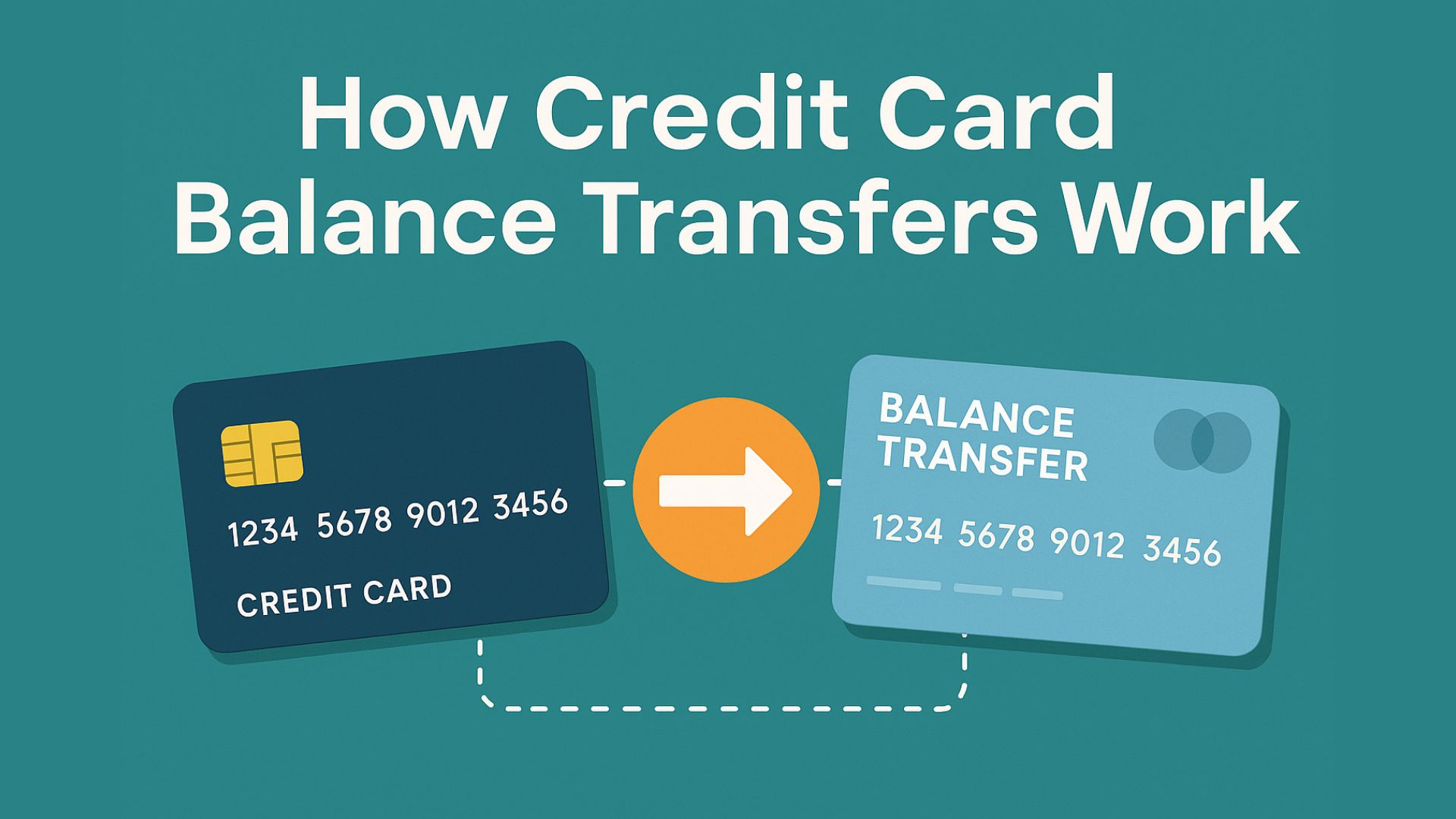Most of the news items in this piece are relatively positive, but there are a couple of somewhat negative bits, which I will put near the front, just to get it over with.
First comes an update on COVID 19, which we’re all hoping is mostly a thing of the past. But there are some disturbing details, the most disturbing of which is a new COVID variant that sometimes causes symptoms sometimes called “razor blade throat.”
The variant, designated NB.1.8.1 was first detected in China in January of this year. According to the World Health Organization, the risk posed by this variant is low at the global level, and in their report last month WHO stated that “Currently approved COVID-19 vaccines are expected to remain effective to this variant against symptomatic and severe disease.” (I shouldn’t need to point out that at this stage of the pandemic, vaccines don’t prevent infection from the new variants that come along, but they are effective in preventing the most serious consequences.)
People infected with the NB.1.8.1 variant may develop extremely sore throats. These unfortunate persons say that it feels as though their throats were invaded by razor blades. An on-line post said “I had a sore throat last Saturday night, started sort of just scratchy, then progressed into not being able to swallow and kept me up all night.” This symptom is a new and different development in the COVID 19 saga. We can hope that the coronavirus does not evolve to cause more new and harmful symptoms.
According to the latest CDC data, NB.1.8.1 strain is the second highest in the U.S. and makes up 37% of the total cases of COVID-19 recorded in the U.S.
The most common strain is LP.8.1, which accounts for 38% of cases, followed by NB.1.8.1 with 37%, XFG with 8%, XFC making up 7%, and LF.7.9 with 4%. These are classified as “variants of interest.” The other category is called “variants of concern.” None of the current variants are classified as “variants of concern.”
On balance, the prevalence of COVID causing symptoms severe enough to require hospitalization is very low. The only state in which that prevalence is increasing is California, where 0.52% of persons presenting to hospital emergency departments are diagnosed with COVID. That percentage has been slightly increasing, but it is still quite low.
The state where the percentage of emergency department (ED) patients presenting with COVID is highest is Florida, where 0.72% of patients get that diagnosis. Florida has had elevated percentages of COVID cases from the beginning of the pandemic, and its elderly population is at increased risk.
The states the lowest percentage of ED patients with COVID are Nebraska (0.13%), Pennsylvania (0.13%), and Maine (0.17%).
As you can see, the percentage of patients presenting to the ED who get a COVID diagnosis doesn’t breach the one percent marker in any state. We can conclude that the COVID pandemic is really and truly receding.
The FDA is considering using AI as a way to speed up the drug approval process
No doubt about it, speeding up that process would be a good thing. The new agency commissioner, Dr Marty Makary, co-wrote an article in JAMA with Dr Vinay Prasad, including the following statement: “The FDA will be focused on delivering faster cures and meaningful treatments for patients, especially those with neglected and rare diseases, healthier food for children and common-sense approaches to rebuild the public trust.”
According to a story in the NY Times on June 12th, the FDA has introduced Elsa, an artificial intelligence large-language model similar to ChatGPT. The FDA proposes to use Elsa to perform product review tasks such as describing side effects.
The newly-installed FDA officials proposed speeding drug approval by requiring only one major study in patients rather than two, which has been the practice up to now. They also wrote that AI has the promise to “radically increase efficiency” by examining as many as 500,000 pages submitted for approval decisions.
The FDA proposals closely follow a report issued by Robert Kennedy’s MAHA Commission. MAHA, as you may know, stands for “Make American Healthy Again.” The report was found to be riddled with references to scientific research that was fabricated by an artificial intelligence program. There was no actual research backing the references.
Some current and former health officials had significant reservations. They said, according to the NY Times, that the AI model was “hallucinating.” According to MIT Management, “Generative AI tools also carry the potential for otherwise misleading outputs. AI tools like ChatGPT, Copilot, and Gemini have been found to provide users with fabricated data that appears authentic. These inaccuracies are so common that they’ve earned their own moniker; we refer to them as “hallucinations” (Generative AI Working Group).”
From my perspective, the Makary-Prasad-Kennedy notion that FDA drug approval should rely more on AI and less on clinical trials is not only wrong, but dangerous. No doubt, AI can examine all the possible compounds that might be used as pharmaceuticals and also all the possible targets that these compounds might affect in our bodies, and determine whether those possible drugs could bind to those targets, which is how drugs work. But AI cannot determine whether the result of those connections between the potential pharmaceutical and the human target would be beneficial, harmful, or inconsequential.
To learn something about the potential efficacy and safety of any pharmaceutical candidate, what’s needed are clinical trials, and not just one. I am not going into detail about the planning and structure of clinical trials intended to determine whether a compound should receive approval for use in humans, but at the very least, it’s necessary to determine whether the compound in question is safe and whether it provides some degree of benefit. Clinical trials also provide a huge range of other vital information about how drugs should be used, and there is no way for this kind of information to be discovered without actual clinical trials in human beings.
AI doesn’t give a hoot about our health and well-being, and there’s no reason to trust it on those matters.
A compound that might reverse brain inflammation and treat Alzheimer’s
The key word here is “might.” We’re in the area of potential benefit, not demonstrated benefit. But the information so far is positive.
The research comes from a team at the University of Barcelona, which is focusing not on the plaques in the brain like most previous treatments, but by stopping the damaging inflammation behind them.
Alzheimer’s is the leading cause of dementia worldwide. In Spain alone, where this research was carried out, more than 800,000 people are living with the disease. The global impact of Alzheimer’s is enormous. The Alzheimer’s Association projects that there will be 78 million persons with Alzheimer’s dementia by 2030 and 139 million by 2050.
Alzheimer’s has no cure, and current drugs offer only limited help for people in the early stages. But recent discoveries suggest that inflammation in the brain might be more than just a side effect — it may be a key driver of the disease itself.
In a person who does not have Alzheimer’s disease, there are molecules in the brain known as epoxyeicosatrienoic acids (EETs), which help reduce inflammation and protect nerve cells. There is also an enzyme called soluble epoxide hydrolase (sEH). This enzyme breaks down the protective EET molecules. Once broken down by sEH, these EETs become compounds that promote inflammation.
Scientists found that in both people with Alzheimer’s and mouse models of the disease, the amount of sEH was unusually high, especially in the hippocampus —an area critical for memory. That’s why researchers turned their focus to this enzyme and developed a new compound. The results so far look promising.
The potential drug targets sEH. Blocking sEH helps the brain keep more of its natural anti-inflammatory compounds. This approach could be especially useful because it doesn’t focus on just one part of the disease. Alzheimer’s involves a complex mix of problems. The best-known factors are beta-amyloid plaques and tangled tau proteins, but loss of nerve cells and harmful immune responses have long been suspected.
It has been known for some time that Alzheimer’s disease is highly complex. Beyond those best-known factors in the Alzheimer’s pathology, harmful auto-immune responses leading to inflammation have more recently been identified as contributing causes. By lowering brain inflammation and supporting nerve cell health, sEH inhibitors could treat several of these problems at once.
This newly-discovered compound, labeled UB-SCG-74, has the effect of blocking sEH. The research program started with an earlier version of the molecule, dubbed UB-SCG-51. It demonstrated good brain penetration and could block sEH effectively. Tests in mice with Alzheimer’s showed it did more than just ease inflammation—it also slowed down cell death, cut back on toxic protein buildup, and improved brain function. Seeking to improve the benefits, researchers created a modified version, UB-SCG-74, which is more easily absorbed in the body and lasts longer.
UB-SCG-74 was tested in a strain of mice that quickly develop symptoms similar to human Alzheimer’s. The treated mice showed better memory, stronger synaptic plasticity (the ability of brain cells to communicate), and fewer signs of brain damage. These benefits lasted for a full month after the treatment ended. That long-lasting impact hints that the drug might not just mask symptoms, but actually change the disease’s course.
UB-SCG-74 outperformed both donepezil, a commonly used Alzheimer’s drug, and ibuprofen, a known anti-inflammatory. No signs of toxicity were found in safety tests. This supports moving the compound toward preclinical development.
It may seem premature to spend much time discussing a potential drug that has up to this point been tested only in mice. No pharmaceutical company as yet is involved in the development of UB-SCG-74, and it has not even been given a specific chemical name. But as a drug that has the potential to treat Alzheimer’s disease in the early stages, UB-SCG-74 could be a step on the way to a new paradigm of care for Alzheimer’s.
As we have discussed in several of these missives, a great deal of the drug development for Alzheimer’s has been focused on agents that target the most prominent brain features of the disease, those being amyloid plaque and neurofibrillary tangles. Those, however, do not become practical targets until the disease has progressed beyond the earliest stages. UB-SCG-74 addresses the process that leads to those adverse developments in the brain. Blocking the molecule that leads to brain inflammation and the accumulation of toxic proteins has the potential to delay or perhaps even prevent the onset of Alzheimer’s. And the discovery of a compound that impedes the toxic effects of that molecule is highly promising. UB-SCG-74 is the most effective compound developed up to now, but also opens a pathway to the development – perhaps – of even more effective molecules as the research continues, which it surely will.
Taxi and ambulance drivers have lower Alzheimer’s disease-linked death rates
This unexpected finding was the result of a huge study based on evidence from about 9 million persons with 443 different occupations, conducted by Mass General Brigham, published in the BMJ on 12/17/2024. Of these, 348,328 died from Alzheimer’s disease during the two-year study period which ran from January 1, 2020 to December 31, 2022. Among the 16,658 taxi drivers in the study, 171 died of Alzheimer’s – about 1.3%. And among the 1,348 ambulance drivers, 10 died of Alzheimer’s – 0.74%. These were the lowest proportions of deaths due to Alzheimer’s of all the occupations studied.
These Alzheimer’s-related death rates were much lower compared with the rates in other transportation-related jobs, such as bus drivers, whose Alzheimer’s-related death rate was 3.11%, or aircraft pilots, with a 4.57% death rate due to Alzheimer’s. That’s a three- to four-fold difference.
What might account for this large difference? A neuroimaging study conducted in taxi drivers in London demonstrated enhanced functional changes in the hippocampus, which is the brain region involved in the creation of cognitive spatial maps – i.e., the region of the brain that orients us as to where we are and where we want to go. But the hippocampus is also where Alzheimer’s disease develops – Alzheimer’s is associated with accelerated atrophy of the hippocampus.
In this respect, the essential difference between navigational processing in ambulance and taxi drivers versus bus drivers and airline pilots is that the former drivers need to figure out where they’re going and how to get there in real time. The exact route they need to take is not precisely plotted in advance. Airline pilots and bus drivers, in comparison, follow a fixed route. They don’t need to keep their hippocampi continuously at work.
The BMJ study’s lead author Vishal Patel, MD, MPH, a resident physician in the Department of Surgery at Brigham and Women’s Hospital said “We hypothesized that occupations such as taxi driving and ambulance driving, which demand real-time spatial and navigational processing, might be associated with a reduced burden of Alzheimer’s disease mortality compared with other occupations.”
Regarding the practical implications of this study, we certainly cannot suggest that people should take up taxi and ambulance driving as an Alzheimer’s disease preventive measure. But the implications are wider. We need to keep our brains active and involved. The hippocampus is a small part of the brain, with several major functions. It converts short-term memories into long-term memories by organizing, storing and retrieving memories. It also controls spatial memory and verbal memory. All of these vital functions are adversely affected by Alzheimer’s, but the information about cabbies and ambulance drivers adds to the evidence that keeping the hippocampus busy slows the development of Alzheimer’s.
The BMJ study’s senior author, Anupam B. Jena, MD, PhD, a physician in the Department of Medicine at Massachusetts General Hospital, stated: “We view these findings not as conclusive, but as hypothesis-generating. But they suggest that it’s important to consider how occupations may affect risk of death from Alzheimer’s disease and whether any cognitive activities can be potentially preventive.”
Dr Jena’s statement is cautious, which is fairly usual when researchers are commenting on their own work. But the conclusions are in line with other Alzheimer’s disease findings, going back to the nun’s study, which goes back to 1986. That study – still ongoing – showed that the nuns who had been more intellectually active in their early years (as evidenced by their written narratives dating from their entering the sisterhood) had significantly more cognitive abilities in their later years even when they had similar amyloid and tau markers on autopsy. The more literate nuns, along with the drivers who have to stay on the alert to get where they need to go, do a better job of fending off the cognitive decline.
Yes, Dr Jena, cognitive activities can be preventive. Keep those little grey cells humming!
A newly-approved HIV drug is much more effective and is given every six months
The drug, called Yeztugo (lenacapavir) from Gilead Sciences, received FDA approval this June 18th specifically for the prevention of HIV infection. This same compound, sold under the brand name Sunlenca, had previously been approved for medical treatment of HIV infections in the European Union in August 2022, in Canada in November 2022, and in the United States in December 2022. It is the first of a class of drugs called capsid inhibitors to be approved by the FDA for treating HIV/AIDS.
Capsid inhibitors are a class of drugs that target the HIV capsid, which is a protein shell that protects the virus’s genetic material and enzymes. By interfering with the capsid’s structure and function, these inhibitors can disrupt HIV’s life cycle, including its ability to enter cells, replicate, and infect new cells.
Now, lenacapavir, marketed as Yeztugo, has received approval in the US for HIV prevention. Yeztugo/lenacapavir is the first in a new class of antiretrovirals which block HIV from infecting and making new copies of itself inside the immune cells it targets.
In clinical trials, lenacapavir/Yeztugo nearly eliminated HIV’s spread among individuals who were given an injection of the drug every six months. HIV, as you may remember, is human immunodeficiency virus – the virus that causes AIDS (acquired immune deficiency syndrome). The virus weakens the immune system by attacking and destroying T-cells, which are the agents in our immune system that target invading pathogens. Persons with that syndrome are sometimes unable to fight off even minor illnesses. The symptoms of HIV may not appear until a person is exposed to a pathogen, at which point the immune system fails to do its job and the person may fall ill.Transmission of HIV occurs through contact with infected blood, semen, or vaginal fluids. Some individuals with HIV develop flu-like symptoms 2 to 4 weeks after getting the virus. Others may not develop symptoms for years, if at all. As the virus multiplies and destroys immune cells, symptoms can develop such as fever, fatigue, and swollen lymph nodes. Untreated, HIV typically turns into AIDS in about 8 to 10 years.
No total cure exists for HIV/AIDS, but some medications can control HIV and prevent disease progression. With treatment, most people with HIV in the US do not progress to develop full-blown AIDS.
Yeztugo/lenacapavir was approved after outstanding results in Gilead’s large clinical trials of the drug. The trials randomly assigned people at risk of HIV to receive either lenacapavir injections every six months or daily Truvada, a pill form of pre-exposure prophylaxis, or PrEP. Among gay and bisexual men and transgender people, the Yeztugo group had an 89% lower HIV rate than a group taking Truvada and a 96% lower rate than the estimated infection rate would have been in high-risk persons who did not receive any PrEP. In a similar trial in women in sub-Saharan Africa, no one who received Yeztugo contracted HIV.
In spite of the excellent clinical trial results, the cost of Yeztugo/lenacapavir could be a major obstacle to its widespread adoption. It is priced at $14,109 per injection. Given that the recommended dosage is twice a year, that comes to $28,218 per year. How much of this would be covered by health insurance is a big unknown.
Health insurers, at least in the near term, might decline to cover Yeztugo/ lenacapavir in favor of other forms of pre-exposure prophylaxis (PrEP), including the cheaper generic version of Truvada pills, which cost as little as $30 per month. The original version of Truvada, also made by Gilead, was the first approved PrEP drug in 2012, followed by Descovy, a similar oral medication from Gilead, in 2019.
Use of these drugs has greatly increased among gay and bisexual men, who, according to the CDC, account for 7 in 10 new HIV cases and comprise the overwhelming share of PrEP users.
However, considering how much higher the HIV rate is among Black and Latino gay men compared with their White peers, PrEP use among men of color has remained disproportionately low. Experts believe PrEP has most likely hastened HIV’s considerable decline among White gay and bisexual men, but the HIV rate among Black and Latino gay and bisexual men has persisted at markedly high rates. In addition, even when they are prescribed PrEP, Black gay men are less likely to take the medications as prescribed.
When they are taken daily, Truvada and Descovy each slash HIV risk by at least 99%. But inconsistent use diminishes PrEP’s effectiveness.
In view of the very high rates by which these PrEP agents diminish HIV risk, the statistic that Yeztugo lowers HIV risk by 89% more than Truvada is strikingly impressive. If daily use of Truvada and Descovy lower HIV risk by 99%, that would suggest that in those individuals taking those PrEP agents, the HIV risk is about 1%. And if Yeztugo lowers the HIV risk in those individuals by another 89%, that would imply that their risk is somewhere around 0.01% – i.e., almost zero.
Looking at the overall picture, I find it difficult to predict that Yeztugo will be widely accepted as standard treatment for individuals with HIV. The existing PrEP agents already have a high rate of success, and they are not expensive. Yeztugo definitely improves on the success rate, but at the moment, at least, the price is exorbitant. Drug companies tend to put colossal price tags on their products at the moment when they get the FDA nod, but these initial prices are paid by only a very small minority of the users. Insurance, Medicare, Medicaid, and a number of pharmacy benefit managers get involved in the picture. The actual prices paid by most consumers will vary hugely.
What is most interesting, and, in my view, most promising, is the inauguration of a new class of drugs. Capsid inhibitors attack the harmful and elusive virus in a new way. Regardless of the success of Yeztugo/lenacapavir, there will be more capsid inhibitors, and there will be more progress is containing HIV infections.
A score on brain function test can identify risk factors for cancer and heart disease
The test, according to a Mass General Brigham study recently published in Family Practice, is the McCance Brain Care Score, which assesses brain health in three categories, designated as Physical, Lifestyle, and Social Emotional. According to McCance, these are categories that impact overall brain health.
Physical: blood pressure, blood sugar, total cholesterol, and BMI are typically recorded by a medical professional or with an approved self-use device. Regardless of medical or family history there are steps that can be taken to change each of these measures.
Lifestyle: diet, alcohol consumption, smoking, exercise, and sleep are all measures an individual should keep track of. Making small adjustments in one area or another over time can have a big impact on brain care score.
Social Emotional: Stress and relationships can influence our physical health. These components include management of stress, strength of social relationships, and an overall sense of purpose and meaning in life. These are the honest “how are you doing” questions that are so critical to the assessment of our brain health.
Researchers from Mass General used data from the UK Biobank to analyze health outcomes in 416,370 persons, aged from 40 to 69. They found that a 5-point higher Brain Care Score at baseline was associated with a 43% lower risk of developing cardiovascular disease over a median follow-up of 12½ years. For cancer, a 5-point increase in Brain Care Score was associated with a 31% lower incidence of lung, colorectal, and breast cancer.
We already know that the majority of cases of heart disease are due to modifiable behaviors, including poor nutrition, physical inactivity, smoking, and excessive alcohol use. Factors such as elevated blood pressure, cholesterol, and blood sugar are also well known to contribute to heart disease, as are psychosocial factors like stress and social isolation. These same factors are understood to be underlying causal factors in strokes and in conditions such as dementia and late-life depression. And the three most common cancers worldwide – lung, colorectal, and breast cancer – share many of these same risk factors.
Dr Jasper Senff, lead author of the study said, “The goal of the McCance Brain Care Score is to empower individuals to take small, meaningful steps toward better brain health. Taking better care of your brain by making progress on your Brain Care Score may also be linked to broader health benefits, including a lower likelihood of heart disease and cancer.”
As we know, many cancers and cardiovascular diseases are related to factors arising out of our daily habits and activities, and we have been repeatedly warned about smoking, excessive alcohol consumption, and unhealthy diets. So what’s different? I would say that the difference lies in the specificity of a particular score, and its verified link to heart disease and cancer. A general warning about our life-style habits is easily glossed over. We’ve heard it a thousand times. But if there is a specific test like the McCance Brain Care Score, which gives us the specific percentage by which our risk factors are affected by these daily actions, we’re apt to hearken and attend. Sometimes numbers have more impact than words.
*****
Surveying the healthcare landscape in general, I am tempted to echo Charles Dickens – “It was the best of times, it was the worst of times, it was the age of wisdom, it was the age of foolishness …” The innovations and breakthroughs in medical treatment and drug development are nothing short of phenomenal. There are avenues for the treatment of diseases which, not too long ago, were death knells. But the actual practice of medicine, which is to say, bringing those innovations and breakthroughs to individuals in need of treatment, is stumbling. It is not so easy to see a genuine physician. There is a shortage of doctors, and fewer people are enrolling in medical school. Unless you are already an established patient, you may have to wait a long time for an appointment. If you have an urgent condition, the only available option may be a walk-in clinic – if there is one – or the emergency department of the closest hospital. It’s not easy for patients to access the best medical treatment.
I’ll try to take a look at this landscape in my next missive. Keep the comments coming, and be well. Best to all, Michael Jorrin (aka Doc Gumshoe)
[ed note: Michael Jorrin, who I dubbed “Doc Gumshoe” many years ago, is a longtime medical writer (not a doctor) and shares his commentary with Gumshoe readers once or twice a month. He does not generally write about the investment prospects of topics he covers, but has agreed to our trading restrictions. Past Doc Gumshoe columns are available here.]




























